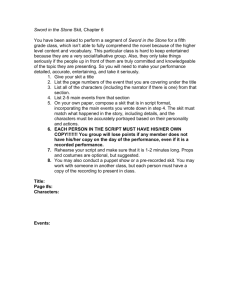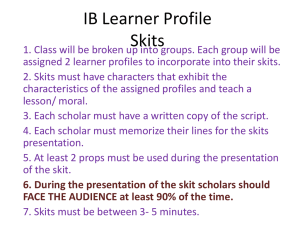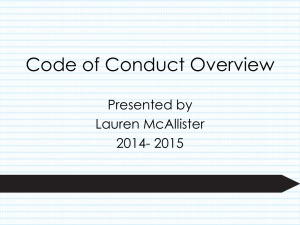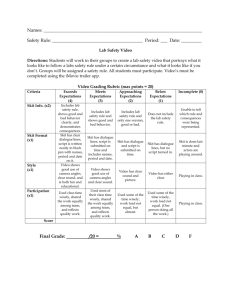Title: A Japanese Feast of Activities
advertisement
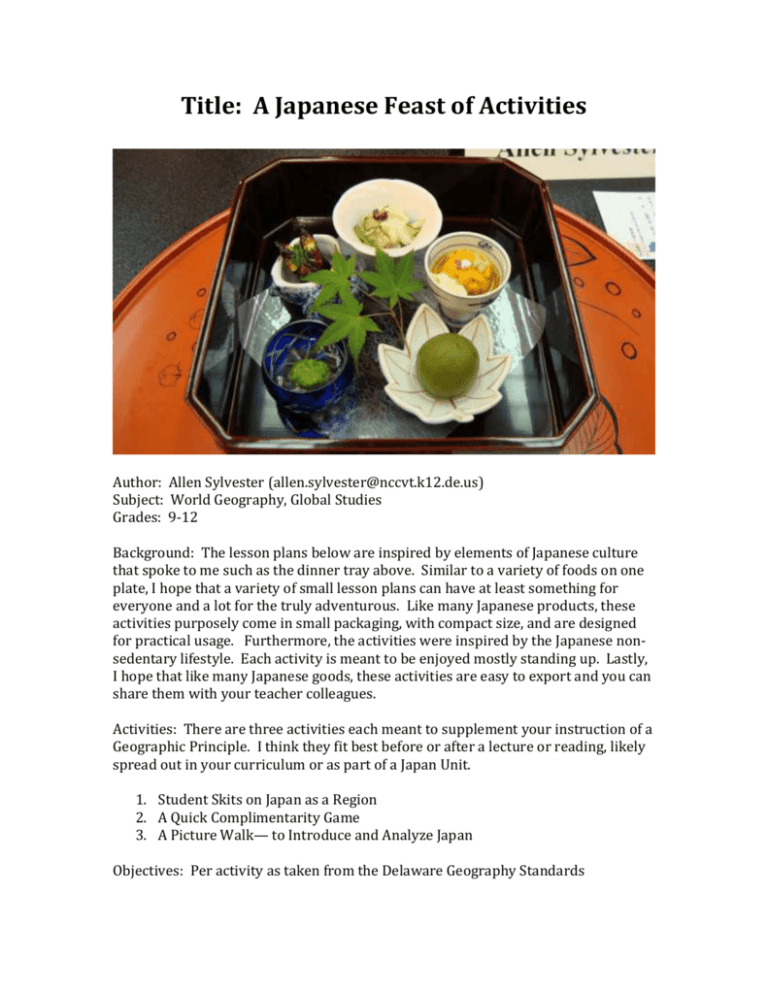
Title: A Japanese Feast of Activities Author: Allen Sylvester (allen.sylvester@nccvt.k12.de.us) Subject: World Geography, Global Studies Grades: 9-12 Background: The lesson plans below are inspired by elements of Japanese culture that spoke to me such as the dinner tray above. Similar to a variety of foods on one plate, I hope that a variety of small lesson plans can have at least something for everyone and a lot for the truly adventurous. Like many Japanese products, these activities purposely come in small packaging, with compact size, and are designed for practical usage. Furthermore, the activities were inspired by the Japanese nonsedentary lifestyle. Each activity is meant to be enjoyed mostly standing up. Lastly, I hope that like many Japanese goods, these activities are easy to export and you can share them with your teacher colleagues. Activities: There are three activities each meant to supplement your instruction of a Geographic Principle. I think they fit best before or after a lecture or reading, likely spread out in your curriculum or as part of a Japan Unit. 1. Student Skits on Japan as a Region 2. A Quick Complimentarity Game 3. A Picture Walk— to Introduce and Analyze Japan Objectives: Per activity as taken from the Delaware Geography Standards 1. Geography Standard Four: 9-12a: Students will apply knowledge of the types of regions and methods of drawing boundaries to interpret the Earth's changing complexity. 2. Geography Standard One: 9-12a: Students will identify geographic patterns which emerge when collected data is mapped, and analyze mapped patterns through the application of such common geographic principles as -Complimentarity (the mutual exchange of people or goods among places usually occurs over the shortest possible distances) 3. Geography Standard Three: 9-12a: Students will understand the processes which result in distinctive cultures, economic activity, and settlement form in particular locations across the world. Procedures: 1. Student Skits on Japan as a Region -This is to be used after a lesson explaining the three types of regions: Formal, Functional, and Perceptual. -Each of the six skits is meant to have four to five roles depending upon class size. a. The students will be divided into six groups with 4-5 students in each group. The groups will each be doing a different skit. For each group, print out a copy of their skit for each student in the group (4-5 student roles). b. Tell students that they will be working in a small group to learn about Japan’s region types through reading and acting out a skit. c. Divide your class into five groups and give each group a different skit, 1 copy for each student in the group. Tell students to each pick a role and allow them 10-15 minutes to organize and practice their skits. Remind students to discuss and identify which region is being represented in their group’s skit. d. Invite each group to come perform their skit in the front of the class. During each student group’s skit, instruct the other students to do the following: On a separate sheet of paper, write down a) what type of region the skit is showing (Formal, Functional, Perceptual), b) What was shown in the skit that made it that region, and c) what is an equivalent region that you can think of in the US or internationally. e. After each group presents, discuss what the students wrote on their papers. 2. A Quick Complementarity Game -This should be used after instruction to further help students understand the Geographic Principle of Complementarity. a. Print out the attached sheet and cut each item into its own strip of paper. b. Pass out strips of paper face down, one for each student. Then tell the students to flip their strip over to read their item and then as quickly as possible to find the matching or Complimentary item. However, the rule is that they have to hold the paper up by their forehead (as to be visible to other students during the game) and must walk around silently until they find their partner. Once they think they have found their complementary partner, they go to the teacher and then are directed to the side of the playing area. c. After all the complimentarity matches are found, the teacher should reinforce how complimentarity results in exchange of goods and ideas and how the principle of accessibility further affects the patterns. d. Have student pairs share with the class their complimentary items and explain why they match. 3. A Picture Walk—to Introduce and Analyze Japan as a Place a. Tell students that you are going to project 10 pictures related to Japanese culture. b. Pass out a T-chart to each student or have students draw their own on a piece of notebook paper. Give them the following instructions for completing the T-chart: On the left hand side of the T-chart, analyze the picture and describe what you think it is of and what it tells about Japan. On the right hand side, find one way to connect the photo to one of the four Geographic Principles or at least some deeper analysis that you can come up with. *Here I would encourage students to be creative. [See example below after step d.] c. As each picture is projected, students are to move and work with a different partner each time and they are to discuss the picture while completing their T-chart. Encourage students to pretend that they are in an art museum and must whisper their answers to each other. Give students about one to two minutes for each photo. d. Once all pictures have been projected, discuss the students’ findings and notes on their T-charts as a whole class and perhaps share your own interpretations. For example, with the following photo students should easily analyze that Japan is a bowing culture and that this is a formal greeting. They might pick up on other details such as homogeneity, formality, and maybe someone might even know that Japan is famous for flower arrangements. Let the students surprise you and share. However, their connection to the Geographic Principles has many possibilities, and I would encourage creativity, such as the following: i. A social hierarchy as seen by varying angles of bowing. ii. Students could say that bowing makes germs less accessible to each person and could slow the diffusion of the germs. iii. These people are interacting and there for there must be some complimentarity between them, such as trade or a common agenda. Materials: 1. Student Skits on Japan as a Region 2. A Quick Complimentarity Game 3. A Picture Walk to Introduce and Analyze Japan
